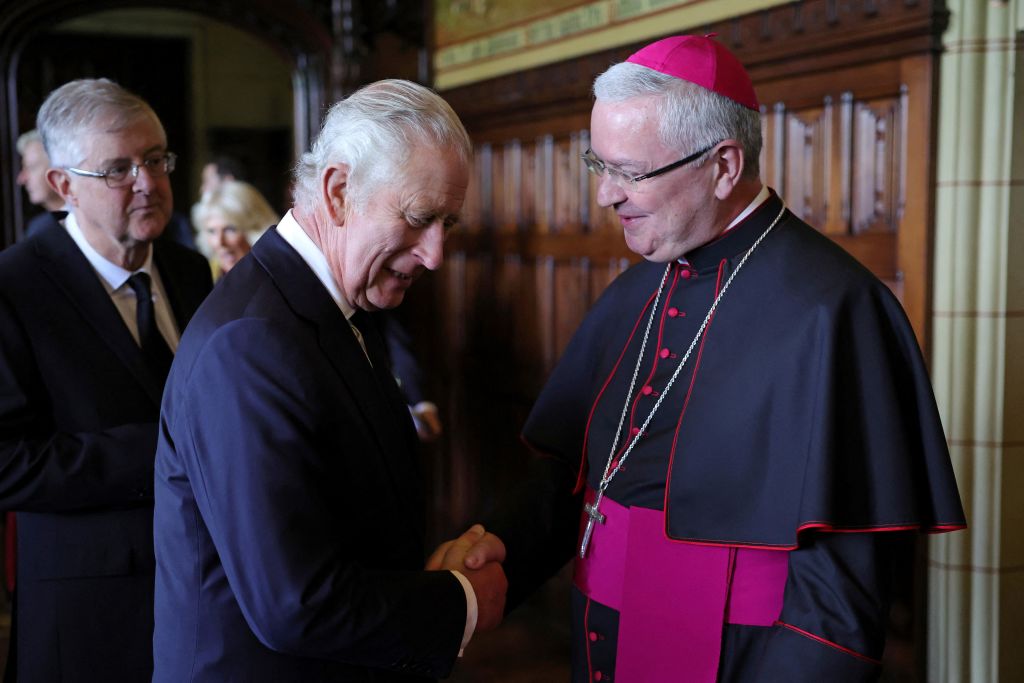This Sunday marks the 150th anniversary of the opening of Oxford Oratory’s Church of St Aloysius Gonzaga.
On 23 November 1875, William Bernard Ullathorne, Bishop of Birmingham, celebrated a Solemn Pontifical Mass in the presence of Cardinal Henry Edward Manning and a packed congregation to bless the new church in central Oxford.
Fast forward a century and a half, and this milestone will be marked by a special celebration this weekend, drawing the parish, its history and its continuing mission into renewed focus.
“Anniversaries are always ‘Janus-like’ events, when we look back with gratitude at the past and look forward in hope and trust to the future,” said the Very Rev. Fr Nicholas Edmonds-Smith, the Provost of the Oratory.
To celebrate the occasion, on 22 of October, Archbishop Longley of Birmingham will celebrate a Solemn Pontifical Mass, in the presence of Cardinal Timothy Radcliffe – who resides in the Blackfriars Dominican community in Oxford – to mark 150 years since that Mass in 1875.
Built at a time when Catholics in Oxford were emerging from the shadows of penal law and repression, the church was funded by £7,000 donated by the Catholic convert Baroness Weld.
It came to stand as a public testament to a revived Catholic presence in a city long shaped by the Reformation and penal restrictions. During previous decades, the Mass and sacraments in Oxford had been conducted in furtive spaces and behind facades, lest the Protestant majority be unsettled.
Over the years, the Oxford Oratory has seen many eminent priests. Among its early parish priests was the poet-priest Gerard Manley Hopkins, who served there between December 1878 and September 1879.
Later, when the Jesuits withdrew in the 1980s, the parish passed into the care of the Archdiocese of Birmingham and in 1990 the Oratorian community from the Birmingham Oratory was invited to take over. By 1993, the Oxford Oratory had been established as an independent congregation.
Its liturgical life reflects the long-standing Oratorian commitment to dignified and reverent worship, a hallmark of the English Oratories since their foundation in the 19th century.
While most weekday Masses are celebrated in English, Sundays and Holy days retain a more solemn character, with a sung Latin Solemn Mass in the modern rite and a Tridentine Low Mass also offered, preserving the Church’s older musical and devotional inheritance.
The parish Mass remains in English, ensuring accessibility for the wider congregation. Music continues to play a central role – the church’s organ, enlarged between 1998 and 2004 by Matthew Copley, supports both chant and polyphony and is listed in the National Pipe Organ Register, reflecting the Oratory’s ongoing commitment to beauty in the service of the liturgy.
“The Church of St Aloysius, built and loved by generations before us, is the outward visible sign in stone, brick, wood and marble, [while] we are the ‘living stones’ of our parish,” said Fr Edmonds-Smit.
"We look forward in joyful hope to the many years of grace to come – so many more Masses and sacraments, more heartfelt prayers, more family moments.”
Photo: Mass in the (image courtesy oxfordoratory.org.uk)







.jpg)

.jpg)
.jpg)





